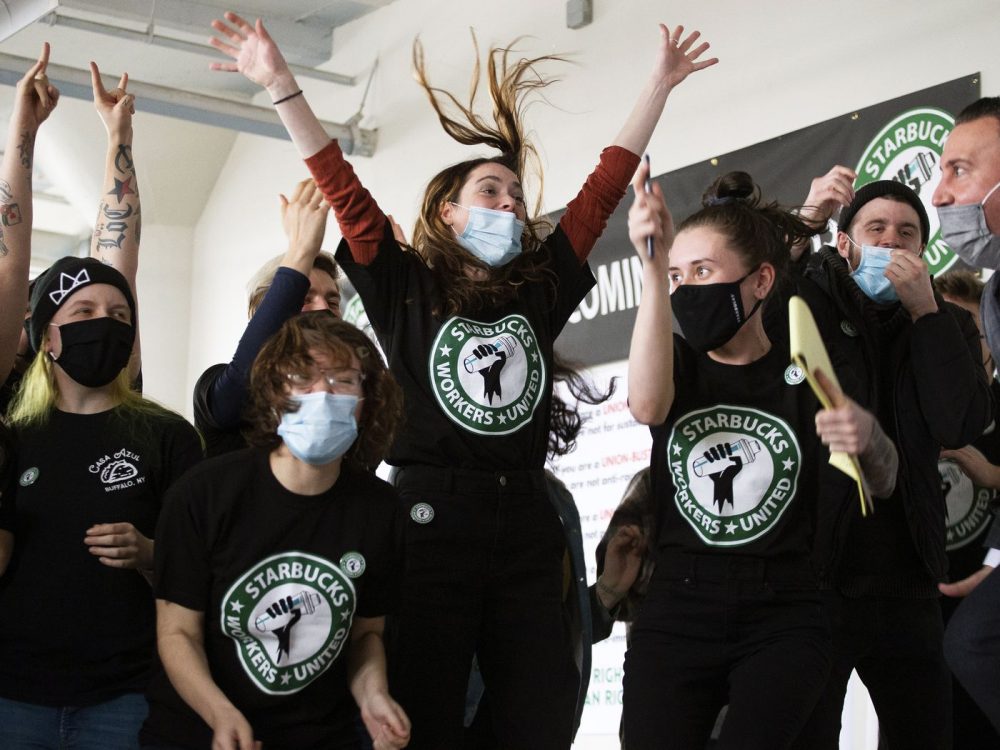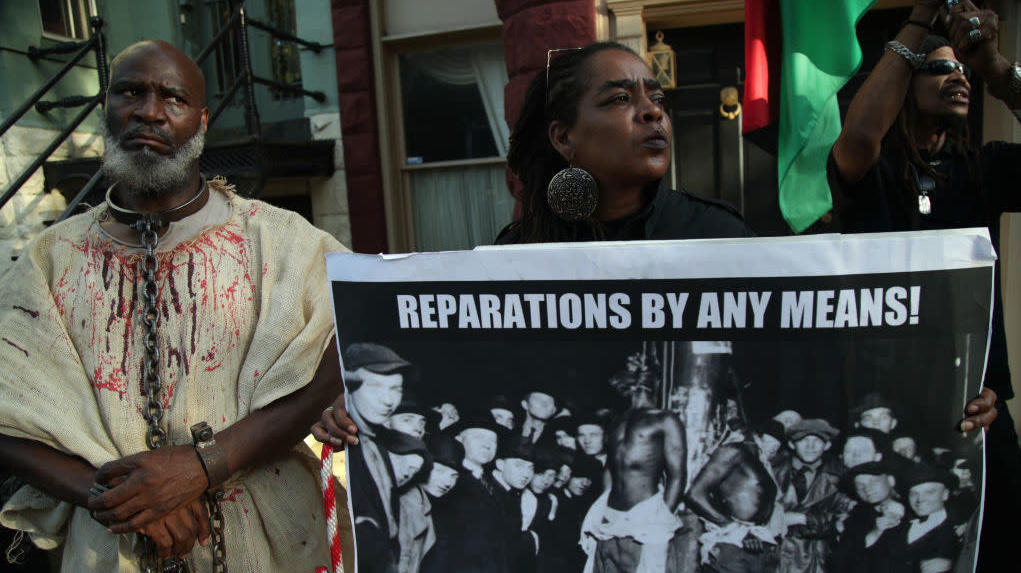
SAM QUATTROCIOCCHI – OCTOBER 26, 2022
EDITOR: ABBY MORRIS
Prior to COVID’s unprecedented shock to the labor market, Unions, sectoral bargaining, strikes, and worker solidarity around the world had been on the decline since the global imposition of neoliberal ideals like market fundamentalism, limited government, and anti-labor practices. Such a decline in workers’ power has led to a commensurate increase in capital’s power. Capitalists have used that boost in leverage to set up institutions and systems that have concentrated ever more wealth and income into their hands. A feedback loop has been created where capital accumulates power which enables them to design institutions that allow even more accumulation of power. But, the United States is truly in a league of its own amongst the developed world when it comes to this decline in unions and concentration of money in the hands of the most affluent. Since 1970, union membership has fallen precipitously from ~30% to ~10% as the top 10%’s income share has grown from ~30% to ~50%. These trends of inequality and union membership have been inversely correlated since as far back as 1920.
Since the world has started to emerge from the COVID-19 crisis, there has been the rise of a new phenomenon almost as surreal as the pandemic itself: a resurgence of organized labor in the United States. As workers returned to the workforce in the past couple years, their standards for pay and working conditions have seemingly increased. The National Labor Relations Board found that from October 2021 to March 2022, the number of union filings had increased by 57% and unfair labor practice charges by 14% compared to the same window the year before. National approval of labor unions among the general public has also risen to 71% (a 57-year high). This may partially be due to the taste of a social democratic welfare state in the form of expanded unemployment benefits and multiple rounds of stimulus checks that Americans experienced during the pandemic. It also could have something to do with the pandemic shaking up expectations regarding the relationship between workers and employers. Employees who were vulnerable and forced to work came out of the experience having higher standards for benefits, pay, and safety. Being forced to work and treated like numbers on a sheet by corporations in the midst of a dangerous pandemic may have made people more willing to engage in labor activism. This is also all amidst an increasingly pro-labor political and social environment. Regardless, there is clearly a new life in the labor movement. We can see troves of examples of new unions at firms like Amazon, Starbucks, Blizzard, Apple, and many more.
New York Amazon workers shocked the world and won a union in the face of the United States’ largest private employer. Led by Christian Smalls, the workers beat back Amazon’s more than $4 million effort to kill the initiative and won the vote with 55% in favor of unionization. In Smalls’ words, working at an Amazon warehouse means, “your body hurts, your body aches. You’re doing repetitive work. So, you’re hurting the same limbs every day…these are real people that are being hurt and affected.” With these conditions, it is no surprise that unionization is gaining momentum. And Amazon workers are not alone. More than 240 Starbucks locations across the country have recently voted in favor of unionization under the banner of Starbucks Workers United. Apple store workers have also seen success with a Townson, Maryland location becoming the first in the US to be represented by a union.
While this may be the beginning of a new era of powerful organized labor in America, skepticism is warranted. After all, a rise in organized labor has happened before. In the 30’s and 40’s, American union membership skyrocketed as the labor movement was gathering worldwide momentum. Workers everywhere were starting to question a system where they were paid low wages, subject to shocking working conditions, and had no input over how their workplace was run. In most developed countries this questioning caused a surge in strikes, unions, and socialist workers’ parties. All of these institutions organized for pro-labor legislation geared towards creating a social democratic state that supports labor’s power in the face of capital. This reform-oriented approach established the modern welfare state. Despite impressive longevity compared to revolutionary state socialist experiments like the Soviet Union, this arrangement was still structured around capital retaining enormous economic power. As such, even the countries which saw the greatest success with social democracy have since seen this power wielded to weaken organized labor, gut unions, and privatize public assets, goods, and services.
One may ask what caused this degeneration of social democratic achievements when there was so much momentum in the right direction? The answer is neoliberalism. This often repeated, but seldom understood buzzword was the reactionary movement that formed against labor and the welfare state in response to difficulties with economic stagnation, underinvestment, inflation, and low profit rates. Neoliberalism was a movement comprised of those with the most power in society. Its practitioners, such as President Reagan in the US, Prime Minister Thatcher in the UK, and many other elite backers insisted that the culprit of these economic difficulties was labor having too much leverage. To rectify this, they embraced an agenda of privatization, deregulation, tax cuts, decreased government spending and smashing unions. Labor proved to be no match. Once capital decided it could not tolerate a labor movement with any leverage, it killed it.
Now, with labor rising again, we can already see examples of reactionary employer backlash happening to the current nascent unionization movement. Corporations like Amazon, Starbucks, Apple, etc. are using every legal (and some illegal) resource at their disposal to crush union efforts before they can succeed. They’ve fired union leaders, closed locations which they suspect will try to organize, and intimidated, surveilled, or even threatened workers. In union elections with more than 50 workers, 75% of employers hired outside consultants to advise them on how to best kill the union effort. Additionally, due to how weak and unenforced America’s current labor law is, even if workers successfully win a vote to establish or join a union, their employers can and will drag out negotiations as long as possible. They even take steps to try and undo the elections. This can be done by getting them deccertified, only offering raises at non-unionized stores, or as mentioned earlier, simply closing the unionized location.
In the face of such obstacles, how can a labor movement thrive today and build a durable and permanent system where all workers are treated with dignity? It isn’t enough to just build union membership. If that is all that’s accomplished, capital will just take the first opportunity to beat it back as seen through decades of history. In order for labor to truly build a lasting power structure, it needs to be incubated. The end goal of the rising labor movement needs to be winning state power. Only with control of government can labor limit capital’s leverage enough that they won’t be able to strike back. In the near term, this includes legislation like the Protecting the Right to Organize (PRO) Act, and the Public Service Freedom to Negotiate Act. The former would introduce monetary fines for engaging in anti-labor activity and if passed it would further empower the National Labor Relations Board to counter union-busting. The latter would guarantee the right to unionize for public sector workers. Just because a worker’s boss is the state does not mean they shouldn’t have a right to union representation and collective bargaining. These are all immediately attainable demands as long as there is a strong enough labor movement to pressure the state to enact them. Without the working class’s labor, the entire economy would grind to a halt. An organized working class that is willing to strike and flex that power could pressure for social democratic legislation more effectively than any politician could.
But even these reforms only scratch the surface. In the long-run we should strive for a generous welfare state that gives labor an alternative to the current “work or starve” mentality that continues to allow employers massive leverage over their workers. State power should be used to build worker-led arms of government with lasting power over capital. This could take the form of industry-wide unions run democratically from the local to national level which negotiate with capital on behalf of the entire working class. Sectoral bargaining like this has been among the most durable of the social democratic pro-labor institutions in Europe. Mandatory worker membership on corporate boards could serve a similar function, as well as incentivizing or mandating elements of workplace democracy in firms over a certain size.
All of these proposals would support and encourage a return of organized labor but they would also materially improve the world for everyone. The Democratic Party is the only major party which has a platform that contains reforms that move in this direction, moderate as they may be. But, that party’s base is increasingly comprised of affluent suburban voters as it hemorrhages the working class support. The party has an increasingly elitist brand and has been unable to pass the policies they run on which the working class cares most about. Their growing suburban base is not going to be the foundation that delivers a social democratic agenda. A strong labor movement could be that base because it has an interest in winning and defending concessions for the working class. Historically, major growth in worker power and welfare state provisions haven’t been gifted by the affluent but won by the masses. If the left desires such an agenda, labor power needs to be built in order to deliver it. Fostering an organized and militant working class leads to the mirror image of the feedback loop mentioned earlier. Winning more union power will help the left win state power and establish institutions that cement workers’ power relative to capital.
We live in a system where power is constantly accumulated in the hands of the rich. Reforms which expand economic democracy and give power to the masses will not come from the very hands that took it away in the first place. It needs to be fought for by the people for whom it is necessary. To do that, they need power. With that power, they can win a world where everyone has not just dignity and a right to a basic standard of living, but participatory democracy at work. Work is where we will spend the majority of our lifetime. Why shouldn’t it be subject to democratic decision-making and accountability?
Featured Image Source: Vox
Disclaimer: The views published in this journal are those of the individual authors or speakers and do not necessarily reflect the position or policy of Berkeley Economic Review staff, the Undergraduate Economics Association, the UC Berkeley Economics Department and faculty, or the University of California, Berkeley in general.



